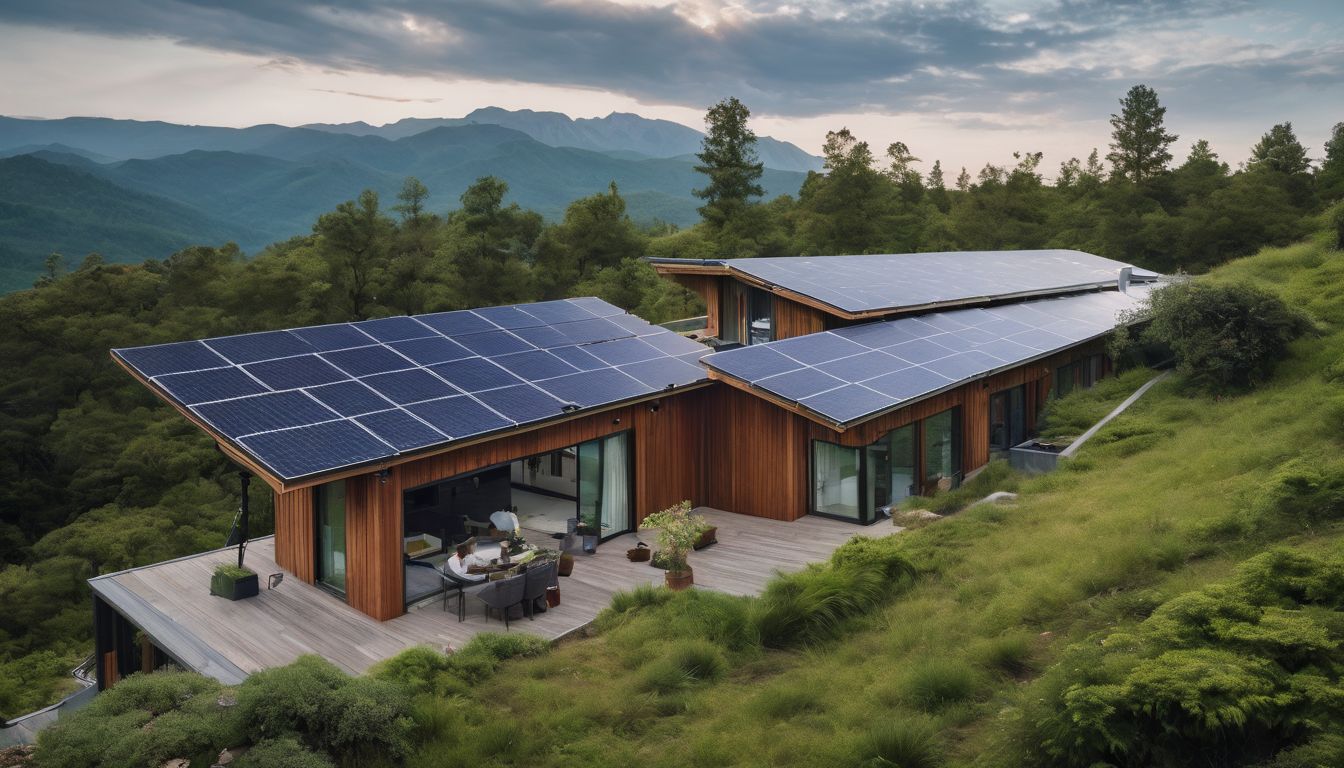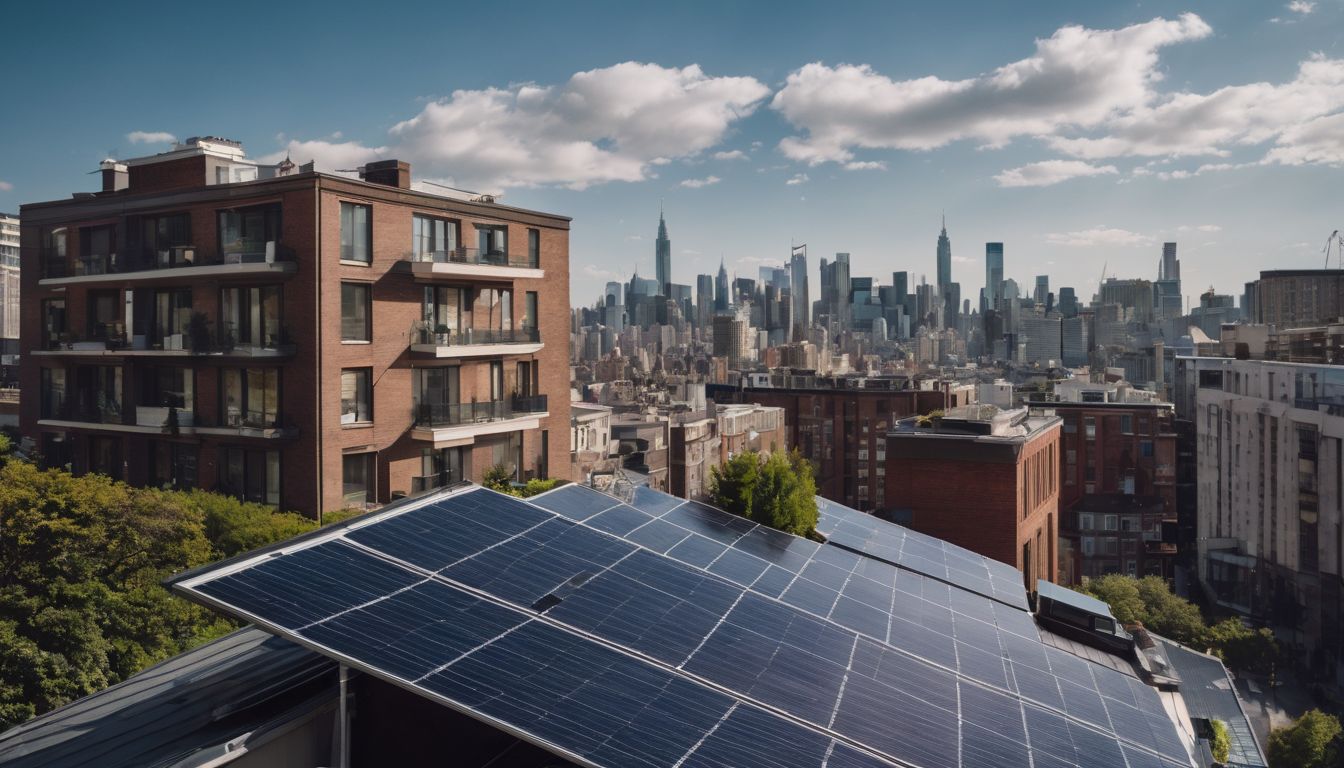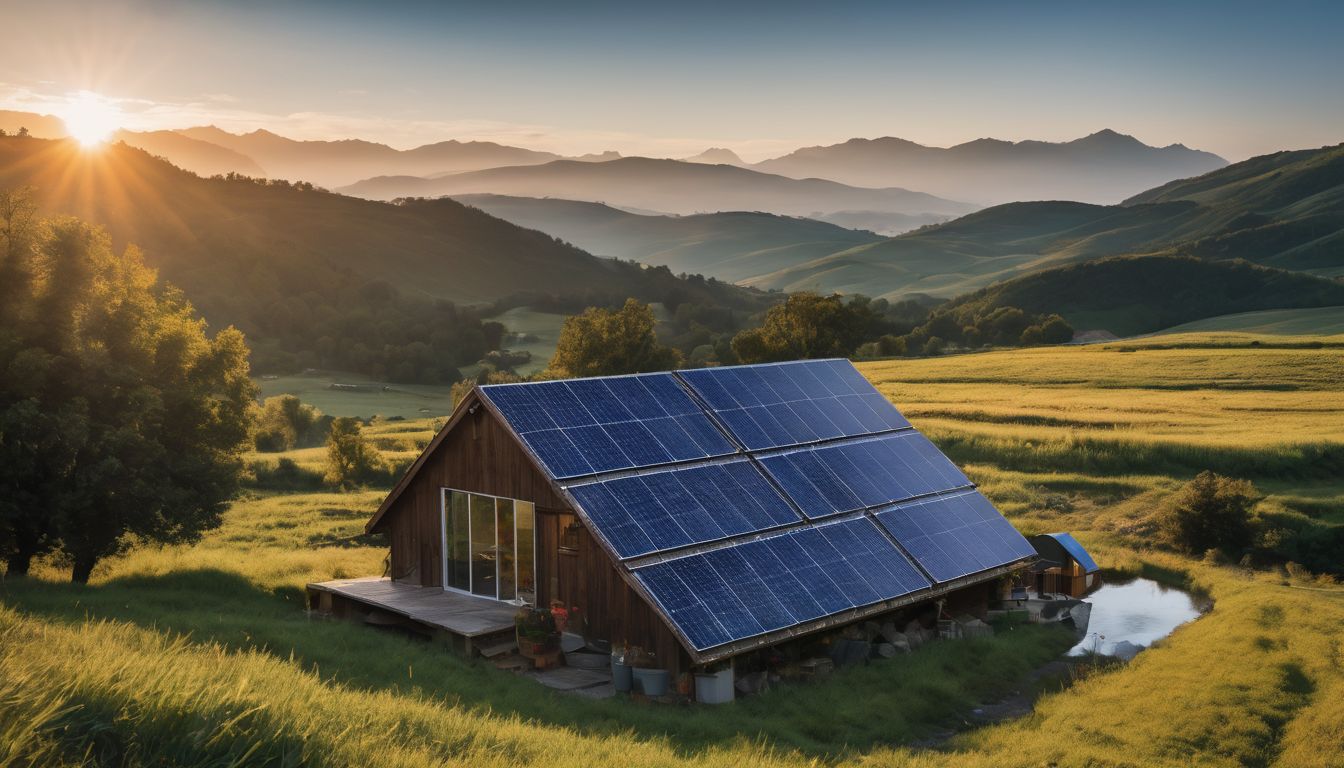As we embrace solar power to battle climate change, it’s crucial to consider its influence on our feathered and furry friends. Solar farms can sprawl over large swathes of land, sometimes affecting the animals that call these places home.
This article delves into the delicate balance between harvesting sunlight for clean energy and safeguarding wildlife habitats. Keep reading; your awareness can spark a change!
Key Takeaways
- Solar energy installations can disrupt natural habitats, causing the removal of vegetation that local wildlife depends on and altering ecosystems.
- Migratory birds are at particular risk from solar farms due to reflective surfaces leading to collisions and habitat changes potentially affecting their migratory patterns and nesting grounds.
- Large – scale solar PV projects have implications for both terrestrial and aquatic wildlife, requiring careful evaluation of the ‘lake effects’ and other ecological impacts before implementation.
- Research by organisations like SETO is vital in understanding and developing strategies to mitigate the negative impacts of solar power on wildlife; this includes creating bird-friendly designs and managing habitats around solar panels.
- It’s important to balance the need for clean renewable energy with conservation efforts by implementing sustainable practices such as environmental impact assessments, protective measures, and advanced technologies to protect ecosystems.
How Solar Energy Affects Wildlife and the Environment
Solar energy can disrupt natural habitats, pose risks to migratory birds, and impact other animals in various ways. Additionally, the potential harm to ecosystems is a concern that needs to be addressed.
Disruption of natural habitats
Large-scale solar farms require significant land clearing to install vast arrays of panels. This process can lead to the loss of crucial natural habitats for a variety of wildlife species.
Trees, shrubs, and grasslands that are home to birds, insects, and small mammals often get removed in preparation for solar installations. The changing landscape not only pushes these animals out of their homes but also disrupts the delicate balance of local ecosystems.
Implementing solar projects can sometimes overlook the value of undisturbed land. For instance, native vegetation is essential in providing food and shelter for wildlife as well as maintaining soil quality and water cycles.
The replacement of this vegetation with non-native plants or gravel beds around solar panels alters habitats and potentially harms biodiversity. It’s essential to find ways to harness renewable energy while minimising damage to natural ecosystems and promoting habitat protection.
Risk to migratory birds
Disruption of natural habitats can also pose a risk to migratory birds. Solar energy infrastructure, such as large-scale solar farms, can lead to fatalities for birds during migration.
The reflective surfaces of solar panels and their proximity to key bird habitats increases the likelihood of collisions and disorientation among bird populations. It’s essential to consider the potential impact on migratory patterns and nesting grounds when planning and constructing solar projects.
Migratory birds play a crucial role in maintaining ecological balance across diverse habitats, making it vital to implement measures that safeguard their well-being alongside advancing sustainable energy solutions.
Impact on other animals
Solar power has a significant impact on other animals beyond migratory birds. Ecosystems can face disruption and potential harm due to the presence of large solar PV projects. Aquatic ecosystems are also at risk, given the impact of solar energy installation and operation.
Many other animals in the affected areas might also be at risk due to habitat disruption and changes in their natural environment caused by solar panels. These disruptions can lead to negative consequences for wildlife conservation efforts, with implications for wildlife populations and biodiversity in these areas.
Potential harm to ecosystems
Solar energy projects can potentially harm ecosystems by disrupting natural habitats, particularly during the construction phase. This disruption may lead to the displacement of wildlife and destruction of vegetation, impacting local ecosystems.
Additionally, large solar installations have been known to affect waterways and soil composition through land use changes, which subsequently impacts local flora and fauna. Mitigating these potential harms requires careful planning and implementation to minimise disturbances to ecosystems.
Adopting sustainable practices such as conducting thorough environmental impact assessments before project commencement is crucial for preserving delicate ecosystems surrounding solar energy facilities.
Furthermore, incorporating protective measures like wildlife corridors or habitat restoration initiatives post-construction can help mitigate any negative effects on the environment.
Important Research on Solar Energy and Wildlife
SETO, or the Solar Energy Technologies Office, has conducted extensive research on the impact of solar energy on wildlife and ecosystems, providing valuable information for understanding and addressing potential risks.
To learn more about their findings and other resources for information, continue reading.
SETO’s research initiatives
- Renewable Energy Wildlife Risk Mitigation aims to understand how solar power affects wildlife and develop mitigation strategies.
- SHINES (Systems Integration) focuses on the integration of solar energy with the grid, including effects on wildlife.
- PVMI (Photovoltaic Manufacturing Consortium) explores ways to minimise ecological impacts during solar panel production.
- SUNSHOT drives research into reducing the environmental footprint of solar power across its lifecycle without compromising efficiency or affordability.
Other resources for information
To dig into more information, consider these resources:
- The National Renewable Energy Laboratory (NREL) offers comprehensive reports and studies on the impact of solar energy on wildlife and ecosystems.
- The Solar Energy Technologies Office (SETO) provides an array of research initiatives, data, and publications focused on the intersection of solar power and wildlife conservation.
- Environmental organisations such as WWF and the Natural Resources Defense Council conduct ongoing research and issue reports on the environmental impacts of renewable energy projects.
- Academic journals like Renewable Energy and Ecological Modelling publish peer-reviewed studies exploring the effects of solar energy on wildlife habitats and biodiversity.
- Local conservation groups may offer practical insights into community-specific challenges and solutions related to solar power development.
Risks and Dangers of Solar Panels
Solar panels can disrupt and endanger wildlife, have environmental impacts, and pose economic concerns. Find out more about the risks and dangers of solar panels in relation to wildlife by reading our full blog.
Disruption and danger to wildlife
Solar panels can disrupt and pose dangers to wildlife in various ways. The installation of large solar farms can lead to habitat disruption for local flora and fauna, altering ecosystems.
Additionally, the reflective surfaces of solar panels may create a risk for birds, as they can be mistaken for bodies of water or simply cause disorientation during flight.
Furthermore, other potential risks include increased predation on insects near solar installations due to the presence of artificial light at night. Mitigating these risks involves careful planning and consideration during the design and placement of solar energy systems.
Environmental impacts
Disruption and danger to wildlife can have significant environmental impacts. The presence of solar panels in natural habitats may disrupt the balance, leading to potential harm for various species.
Solar energy projects can interfere with ecosystems, contributing to risks for local flora and fauna. Understanding these impacts is crucial for developing effective mitigation strategies.
Economic concerns
Economic concerns surrounding solar energy and wildlife need to be taken seriously. While the environmental benefits are clear, it’s important to consider the potential costs and economic impacts.
Issues like disruption of habitats, risks to migratory birds, and harm to ecosystems can have financial ramifications for communities and industries that rely on natural resources.
Understanding these economic concerns is essential for making informed decisions about solar energy implementation. By factoring in the potential costs and finding ways to mitigate them effectively, we can ensure that solar power development is not only environmentally conscious but also economically sustainable.
Ways to Mitigate Risks and Harm
To mitigate the risks and harm to wildlife caused by solar energy, concentrating solar and streamers can be used as potential solutions. Additionally, large solar PV projects can implement ‘Lake effects’ to reduce their impact on the surrounding ecosystem.
Concentrating solar and streamers
Concentrating solar power (CSP) systems use mirrors or lenses to focus a large area of sunlight onto a small receiver, producing electricity. CSP has minimal land-use impacts compared to other forms of solar power.
Streamers occur when birds fly through the concentrated heat above the receiver and are vaporised instantly—a significant risk associated with this technology.
Streamers can be dangerous for birds as they get burned on contact, impacting local bird populations. It’s essential that new mitigation measures such as deterrents or changes in system design are developed and implemented to prevent harm to wildlife.
‘Lake effects’ of large solar PV projects
Large solar PV projects can have significant impacts on nearby bodies of water. The installation and operation of these projects near lakes can disturb the natural habitat and ecosystem balance, posing potential harm to aquatic life.
Furthermore, the reflection of sunlight off solar panels into surrounding bodies of water can lead to an increase in water temperature, affecting aquatic species and potentially altering the ecological dynamics within the lake.
As a result, it’s crucial for developers and environmental agencies to carefully assess the potential ‘lake effects’ before implementing large-scale solar PV projects near bodies of water.
Understanding and mitigating these impacts are essential for preserving the health and biodiversity of local ecosystems.
Potential solutions and mitigation strategies
- ‘Lake effects’ of large solar PV projects The term ‘lake effect’ refers to the phenomenon where solar panels, especially in large projects, create reflective surfaces that resemble bodies of water. This can confuse and deter migratory birds. To mitigate this effect, new coatings are being developed to reduce glare and make the panels more visible to birds.
- Implementing bird-friendly designs for solar installations is a critical mitigation strategy. This involves using techniques such as grid patterns on the panels, placing them in non-prime bird habitat areas, and creating buffers around the installations to reduce the risk of collisions for birds.
- Research into wildlife corridors and habitat management near solar installations is ongoing. Creating green spaces and native plant habitats near solar arrays can help preserve wildlife corridors and maintain ecosystem balance.
- Using monitoring technologies like radar systems and acoustic deterrents can aid in alerting wildlife to potential dangers or deterring them from high-risk areas around solar installations. These technologies are being improved to minimise their impact on local ecosystems while effectively protecting wildlife.
Conclusion
In conclusion, understanding the impact of solar energy on wildlife is crucial for conservation efforts. Mitigating risks such as habitat disruption and harm to migratory birds requires proactive measures.
Research initiatives can provide valuable insights into minimising environmental impacts. Exploring potential solutions and mitigation strategies is essential in promoting sustainable solar power practices.
Let’s champion responsible solar energy development to safeguard our precious ecosystems and wildlife.
FAQs
1. How does solar power benefit wildlife?
Solar power helps in reducing greenhouse gas emissions, which protects wildlife habitats by slowing down climate change.
2. Can rooftop solar installations affect local ecosystems?
Rooftop solar panels have minimal impact on ecosystems as they utilise existing structures, but it’s important to assess the site to ensure wildlife is not disturbed.
3. What is community solar and how does it relate to wildlife conservation?
Community solar involves sharing a large-scale solar project across multiple households, potentially reducing land use compared to individual setups and lessening ecosystem disruption for wildlife.
4. Are there precautions taken when building large solar farms to protect animals?
Yes, careful planning goes into the design of large solar farms to minimise any negative effects on local fauna and maintain balance in the surrounding ecosystem.





